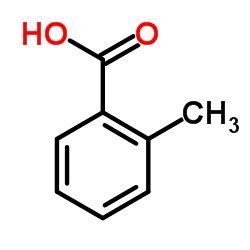Novel AlkB dioxygenases--alternative models for in silico and in vivo studies.
Damian Mielecki, Dorota Ł Zugaj, Anna Muszewska, Jan Piwowarski, Aleksandra Chojnacka, Marcin Mielecki, Jadwiga Nieminuszczy, Marcin Grynberg, Elżbieta Grzesiuk
Index: PLoS ONE 7 , e30588, (2012)
Full Text: HTML
Abstract
ALKBH proteins, the homologs of Escherichia coli AlkB dioxygenase, constitute a direct, single-protein repair system, protecting cellular DNA and RNA against the cytotoxic and mutagenic activity of alkylating agents, chemicals significantly contributing to tumor formation and used in cancer therapy. In silico analysis and in vivo studies have shown the existence of AlkB homologs in almost all organisms. Nine AlkB homologs (ALKBH1-8 and FTO) have been identified in humans. High ALKBH levels have been found to encourage tumor development, questioning the use of alkylating agents in chemotherapy. The aim of this work was to assign biological significance to multiple AlkB homologs by characterizing their activity in the repair of nucleic acids in prokaryotes and their subcellular localization in eukaryotes.Bioinformatic analysis of protein sequence databases identified 1943 AlkB sequences with eight new AlkB subfamilies. Since Cyanobacteria and Arabidopsis thaliana contain multiple AlkB homologs, they were selected as model organisms for in vivo research. Using E. coli alkB(-) mutant and plasmids expressing cyanobacterial AlkBs, we studied the repair of methyl methanesulfonate (MMS) and chloroacetaldehyde (CAA) induced lesions in ssDNA, ssRNA, and genomic DNA. On the basis of GFP fusions, we investigated the subcellular localization of ALKBHs in A. thaliana and established its mostly nucleo-cytoplasmic distribution. Some of the ALKBH proteins were found to change their localization upon MMS treatment.Our in vivo studies showed highly specific activity of cyanobacterial AlkB proteins towards lesions and nucleic acid type. Subcellular localization and translocation of ALKBHs in A. thaliana indicates a possible role for these proteins in the repair of alkyl lesions. We hypothesize that the multiplicity of ALKBHs is due to their involvement in the metabolism of nucleo-protein complexes; we find their repair by ALKBH proteins to be economical and effective alternative to degradation and de novo synthesis.
Related Compounds
| Structure | Name/CAS No. | Molecular Formula | Articles |
|---|---|---|---|
 |
2-Methylbenzoic acid
CAS:118-90-1 |
C8H8O2 |
|
Effect of aspirin treatment on the prevention of esophageal ...
2014-06-01 [Oncol. Rep. 31(6) , 2785-91, (2014)] |
|
Protozoan ALKBH8 oxygenases display both DNA repair and tRNA...
2014-01-01 [PLoS ONE 9(6) , e98729, (2014)] |
|
Oxidation of tolualdehydes to toluic acids catalyzed by cyto...
1995-02-01 [Drug Metab. Dispos. 23(2) , 261-5, (1995)] |
|
Effects of the headspace gas composition on anaerobic biotra...
2003-06-01 [J. Environ. Sci. Health. A. Tox. Hazard. Subst. Environ. Eng. 38(6) , 1099-113, (2003)] |
|
Dual-opposite injection electrokinetic chromatography for th...
2000-06-01 [Electrophoresis 21(10) , 1997-2009, (2000)] |